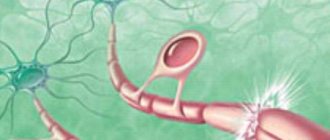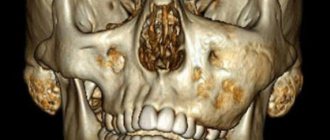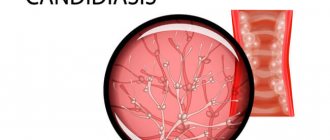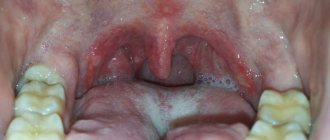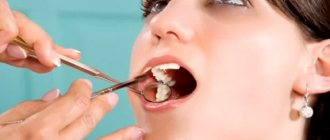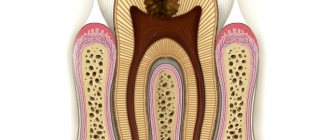Contracture is a condition in which the patient has limited mobility in the joints, which is caused by inflammatory, degenerative diseases of the ligaments, muscle or articular tissues, and tendons.
If the occurrence of contracture is associated with joint disease, it is arthrogenic, if with muscle disease, it is myogenic. In accordance with the nature of motor dysfunction, there is an extension and flexion contracture.
To effectively treat muscle contractures, the rehabilitation clinic of the Yusupov Hospital uses complex reflexology and physiotherapy techniques.
What is muscle contracture?
Muscle (myogenic) contracture is a condition of muscle tissue in which muscles shorten and their extensibility decreases, which is associated with injuries, inflammatory processes, degenerative changes, damage to nerve fibers, or a sharp reflex contraction due to irritation of muscle fibers (mechanical, chemical or thermal).
Muscle contractures can have different localizations - they can affect skeletal muscles, facial muscles (facial muscle contracture), masticatory muscles (masticatory muscle contracture), neck muscles (neck muscle contracture).
Types of disease
In addition to the classification into active, passive and combined contractures, there are many other divisions:
- by restriction of movements - extension, flexion, rotation (limitation in turning and when making circular movements), as well as adduction and abduction;
- by the time of onset of the pathology (acquired and congenital);
- in terms of functionality - functionally disadvantageous (the performance of the limb is not preserved) and beneficial (the mobility of the joint is limited, but the performance is preserved).
Active contractures are represented by the following types:
- central neurogenic (cerebral and spinal), cerebral occur with brain damage, spinal - with damage to the spinal cord;
- peripheral neurogenic - appear when peripheral nerves are damaged, most often accompanied by pain;
- psychogenic - appear during a hysterical attack, disappear at the end of the attack.
Passive contractures consist of the following types:
- myogenic (appear as a result of muscle shortening during reflex contraction or an inflammatory process);
- arthrogenic (due to changes in the ligamentous-capsular apparatus of the joint or articular ends);
- dermatogenic (after the formation of scars on the skin as a result of burns or inflammatory diseases);
- tendogenic (due to shortening of tendons as a result of the formation of adhesions);
- immobilization (caused by prolonged restriction of movements of the arms and legs);
- ischemic (appears after fractures due to limited blood supply to the extremities);
- desmogenic (as a result of wrinkling of fascia and ligaments during deep injuries or chronic inflammatory processes. One of the most common types of desmogenic contractures is Dupuytren's contracture , which we will talk about in more detail).
Dupuytren's contracture
Dupuytren's contracture (or palmar fibromatosis) is a fibrous degeneration of the palmar aponeurosis, which, according to doctors, occurs due to a genetic predisposition. This pathology occurs 6-10 times more often in men than in women.
In most cases, the ring finger or little finger on one hand is affected; less often, the pathological process affects all fingers on both hands and feet.
A small compaction appears on the surface of the palm, similar to a nodule, which begins to gradually increase in size, cords appear, and the tendon shortens. This leads to the fact that the affected fingers become increasingly difficult to bend and straighten, and over time, immobility of the interphalangeal and metacarpophalangeal joints develops. The hand loses its functions, which causes loss of ability to work and self-care skills.
Classification of Dupuytren's contracture
1st degree of disease . The node reaches a size of about 1 cm, and some pain appears when touched. Fingers bend and straighten. Mobility in the joints is preserved.
2nd degree of the disease . The node begins to degenerate into a scar, which extends to the phalanx of the affected finger. Mobility in the affected joint is impaired. The finger with contracture is at an angle to the inner side of the palm of 30-90 degrees. The extension of the joint is impaired.
3rd degree contracture . The fibrous cord extends to the entire finger, the skin forms folds. Movement in the joints sharply worsens. Contracture appears in the metacarpophalangeal joints, which leads to complete ankylosis.
4th degree of the disease . It is possible for several fingers to fuse into a large scar. The fingers are gathered into a fist, which is completely impossible to straighten. The activity of the hand is completely impaired, which leads to disability of the patient.
1 MRI of joints
2 Treatment of contracture
3 Treatment of contracture
What are the reasons for the development of muscle contracture?
The occurrence of contractures can be caused by joint abnormalities:
- deformation and impaired mobility;
- injuries;
- chronic diseases (frequent inflammatory processes).
In addition, contractures can develop with muscle dystrophy and cerebral palsy.
Risk factors for the development of contractures include the following conditions: inflammatory processes in the tendons, rheumatoid arthritis, poliomyelitis, scars, burns, prolonged stay in an immobilized state, polyneuropathy (contracture of the muscles of the lower extremities in this disease is a frequent companion), coxarthrosis (with this pathology it can contracture of the adductor muscles of the thigh develops).
Diagnosis of contracture
The initial diagnosis is based on the patient's complaints and the appearance of the affected limb.
To determine the degree of joint stiffness, physical examinations are used to assess the range of motion during extension and flexion of the damaged part of the body.
One of the main diagnostic methods is radiography.
Depending on the nature and type of pathology, additional research methods may be used.
For neurogenic contracture, you will need to consult a neurologist; for hysterical contracture, you will need to consult a psychotherapist. For passive contracture, MRI (or CT) of the joint, as well as electroneuromyography of the joints, are prescribed.
In case of nonspecific or specific inflammation of the joints, before treating contracture, it is necessary to treat the underlying disease by a rheumatologist, phthisiatrician or venereologist.
Signs of muscle contracture
With muscle contractures of any severity, the patient experiences severe pain, which prevents forced stretching of the affected muscle and bringing it to a normal functional state. The occurrence of pain in muscle tissue during movement is a sign of contracture.
In patients with muscle contractures, flexion-extension functions are impaired; the limbs cannot fully bend and straighten.
When contracture of the masticatory muscles occurs, the movements of the lower jaw are impaired, as a result of which the ability to open the mouth normally is limited.
Contracture of the muscles of the face and neck is accompanied by the appearance of facial asymmetry and pathological tilts of the neck and head.
With contractures of skeletal muscles, the appearance of distortions and asymmetries of various parts of the body and limitation of body tilts to the sides are noted.
Symptoms of muscle contractures
You need to be careful and not miss the first “alarm bells” that may indicate the development of pathology:
- At the initial stage of the disease, the symptoms appear vaguely, and the patient may not pay attention to them. However, an alarming signal should be a feeling of fatigue and aching pain even after minimal physical activity, numbness and stiffness, especially in the morning after waking up, dry skin in the affected area.
- As the disease progresses, difficulty and pain arise when trying to fully bend or straighten a limb subject to contracture.
- In later stages, there is an inability to fully bend or straighten the limb.
Treatment of contractures at the Yusupov Hospital
Thanks to the use of advanced medical technologies and the vast experience of specialists at the Yusupov Hospital, who develop individual treatment regimens for each patient, stable and long-term results are achieved, such as:
- reliable elimination of pain and inflammation;
- improvement or complete restoration of motor activity;
- prevention of muscle atrophy;
- preventing complications of the disease that led to limited mobility;
- significant improvement in quality of life and performance.
One of the physiotherapeutic methods that is used in the Yusupov Hospital for the successful treatment of muscle contractures is shock wave therapy.
The therapeutic effect of this procedure is achieved due to the deep penetration of acoustic shock pulses and activation of local blood circulation.
Shock wave therapy at the Yusupov Hospital rehabilitation center helps to quickly relieve swelling, inflammation and pain, improve metabolic processes in muscle tissue, and stimulate regeneration processes.
The effectiveness of therapy increases with a combination of shock wave therapy and acupuncture, moxotherapy, acupressure and other types of massage, manual, vacuum or magnetic-vacuum therapy, etc.
The combination of local and general impact methods helps improve metabolic processes, normalize the activity of the nervous system, improve the passage of nerve impulses, harmonize the patient’s psycho-emotional state and increase immunity.
In addition to shock wave therapy, other therapeutic methods are used to treat contractures at the Yusupov Hospital: massage (in the form of light stroking or active kneading), electrophoresis and reflexology. Physical therapy is used to quickly recover patients who have suffered a stroke.
Acupuncture provides relief from pain and improves well-being and emotional state.
To increase muscle elasticity and normalize joint function, rehabilitation doctors at the Yusupov Hospital prescribe ultrasound treatment to patients. An improvement in the condition is usually observed after 2-3 procedures.
If necessary, specialists at the Yusupov Hospital prescribe medication to help quickly and effectively relieve pain and relax muscles.
Prevention of muscle contracture
As we have seen, the causes of this disease are very diverse. However, following a number of simple rules will reduce the likelihood of falling into a risk group.
- Avoid physical overload and hypothermia - this can cause joint diseases, leading to muscle contracture.
- Treat limb injuries completely. Even after completing a course of treatment for your injury, see your doctor every six months for a routine examination.
- Try to avoid stress, learn to “switch”, because very often muscle spasms are caused by nervous overload. If it is impossible to “get away” from stress, take gentle sedatives, for example, herbal tinctures or infusions.
- Accustom yourself to a healthy diet and daily reasonable physical activity - this is necessary for muscle tone. Get at least eight hours of sleep.
- If you experience discomfort or difficulty bending or straightening your limbs, consult a doctor immediately.
Remember that muscle contracture must be treated, otherwise the affected limb may become completely immobile. Modern medicine offers many effective methods for treating this disease. The necessary help can be obtained from medical institutions. The shock wave therapy procedure here is carried out by experienced specialists, and the prices for services are much lower than in other clinics in Moscow. Attentive attitude towards each patient, professionalism and responsibility - these are the principles that guide the staff of the Health Plus clinic.
Treatment of contractures with Botox
Along with traditional treatment, muscle injections of botulinum toxin can be prescribed to eliminate contractures. For example, Botox for contracture of facial muscles helps to create a blockade of the nerve transmission process, due to which the muscles relax and pain is eliminated. This strong neurotoxin is used at all stages of diseases. It is a fast-acting and safe drug that does not have any significant side effects.
Physiotherapy and reflexology treatment methods, as well as other therapeutic measures used in the Rehabilitation Center of the Yusupov Hospital, have an anti-inflammatory and immunomodulatory effect, help improve muscle tone and elasticity, eliminate muscle spasms, muscle hypertonicity, increase joint mobility, improve blood circulation, eliminate congestive phenomena and cessation of the development of degenerative-dystrophic changes.
The complex effect provides a significant improvement in motor activity, elimination or significant reduction of disease symptoms (including pain), prevention of the development of complications and improved quality of life. At the same time, in the treatment of muscle contractures in the Yusupov Hospital, pharmaceuticals (except for extreme necessity), surgical interventions are practically not used, and in addition, negative side effects are excluded.
An appointment with a rehabilitation specialist can be made by calling the Yusupov Hospital or online on the clinic’s website.
Symptoms of contracture
The main symptom of all types of disease is difficulty in flexion and extension of the joint.
For example, with a contracture of the elbow, a person cannot move the forearm, straighten or bend the arm. With congenital joint contracture, the affected arm lags behind in development.
Knee damage is characterized by its deformation, as well as impaired support function, pain, swelling, and shortening of the leg.
1 Contracture. Diagnosis and treatment
2 Contracture. Diagnosis and treatment
3 Contracture. Diagnosis and treatment
Types of massage of masticatory muscles
A variety of manual techniques used to restore the natural anatomical state of the muscles and ligaments of the TMJ involve performing exercises both with the help of a practitioner and independently. In this case, it is important to strictly follow the manipulation technique, since otherwise there is a possibility of aggravating an already complicated condition. Outpatient massage to relax the masticatory muscles includes the following procedures:
- Joint traction – used for diagnosed dysfunction, and is implemented by applying physical stress to the mandibular molars. The duration of pressure applied by the direct method, that is, directly from the oral cavity, varies between 10-30 seconds. The action is repeated several times, due to which the joint capsule stretches and the cavity inside it increases.
- Normalization of the articular disc. The compression effect is ensured by a special gripping technique, which involves repeated sequential abduction of the mandibular region into its natural position until the head disc is stabilized.
- Massage aimed at relieving pain due to TMJ dysfunction. The doctor has a targeted effect on certain areas located in the projection of the upper masticatory units, the lateral and pterygoid muscles, and repeats the procedure until the syndrome that occurs under pressure is completely relieved.
Also, in order to alleviate the pathological condition, relieve tension and prevent TMJ pathologies, extraoral massage is practiced, performed with the jaw region closed. Pressure is applied to the middle and angular areas of the masticatory muscles, where trigger points are located.
Advantages
An abnormal condition of the jaw region, characterized by severe symptoms that negatively affect the patient’s well-being, is a reason to seek medical help. Practice confirms that massaging the masticatory muscles allows you to get rid of painful sensations in a short period of time, and also prevents the development of more serious negative consequences. In addition, as part of consultation and manual therapy, patients acquire practical skills that allow them to independently carry out preventive exercises and therapy. These skills are useful both as part of general health maintenance and during exacerbations or relapses of pathologies that impair the functionality of the temporomandibular joint.
About Us
The specialists of the MY ORT dental clinic provide not only orthodontic and orthopedic treatment services aimed at restoring the integrity and aesthetics of the dentition. The arsenal of techniques used by qualified doctors also includes TMJ massage, which relieves excess stress on the masticatory muscles. The availability of advanced equipment, materials and technologies guarantees achievement of the desired result in the shortest possible time. Leave a request by phone - we will take care of your health!
Indications and contraindications
The medical indications that determine recommendations for massage procedures include the following diagnosed factors:
- Facial neuritis and trigeminal neuralgia.
- Paresis and paralysis of the masticatory muscles.
- Formation of contractures of various origins.
- Dysfunction caused by pain syndrome.
- Periodic subluxations and dislocations of the TMJ.
- Impaired joint mobility due to surgery.
Based on the results of clinical diagnostics, other indications for massaging the masticatory muscles can also be formulated - the list below reflects only the most common cases. It is important to take into account that the procedure provides for a number of restrictions, such as:
- Pain syndrome characterized by unknown etiology.
- Limitation of TMJ mobility in the preoperative period.
- Acute form of traumatic arthritis.
- Other medical contraindications.
The final decision is made based on the results of the preliminary examination.
General overview
The masticatory muscles are located on the lateral areas of the skull, and are located in pairs, four on each side. The masseter muscle itself, as well as the temporal muscle, are characterized by a superficial location, while the pterygoid muscles (medial and lateral) are located in the infratemporal cavity. Starting on the cranial bones, they connect to the mandibular region, and set the jaw in motion by contracting and relaxing.
The functionality of the anatomical elements under consideration is difficult to overestimate, since they are involved not only in the processes of food processing, but also in breathing, as well as in the implementation of speech function. Massage of the masticatory muscles for TMJ dysfunction allows you to relieve overstrain, relieve pain and restore jaw mobility.



